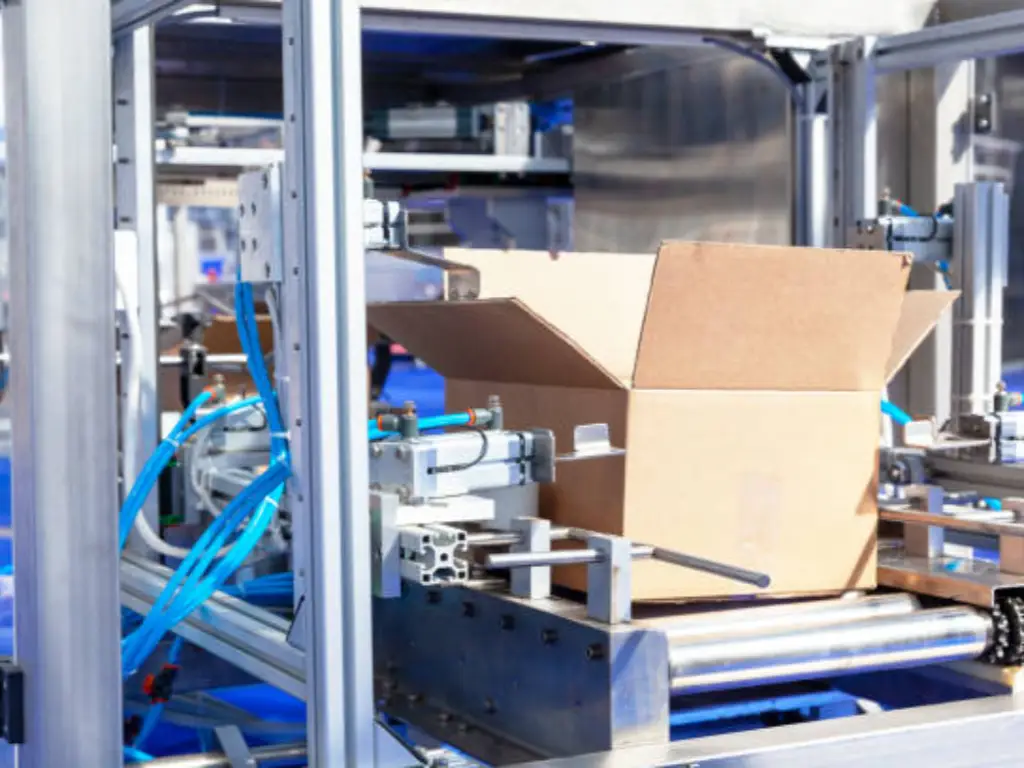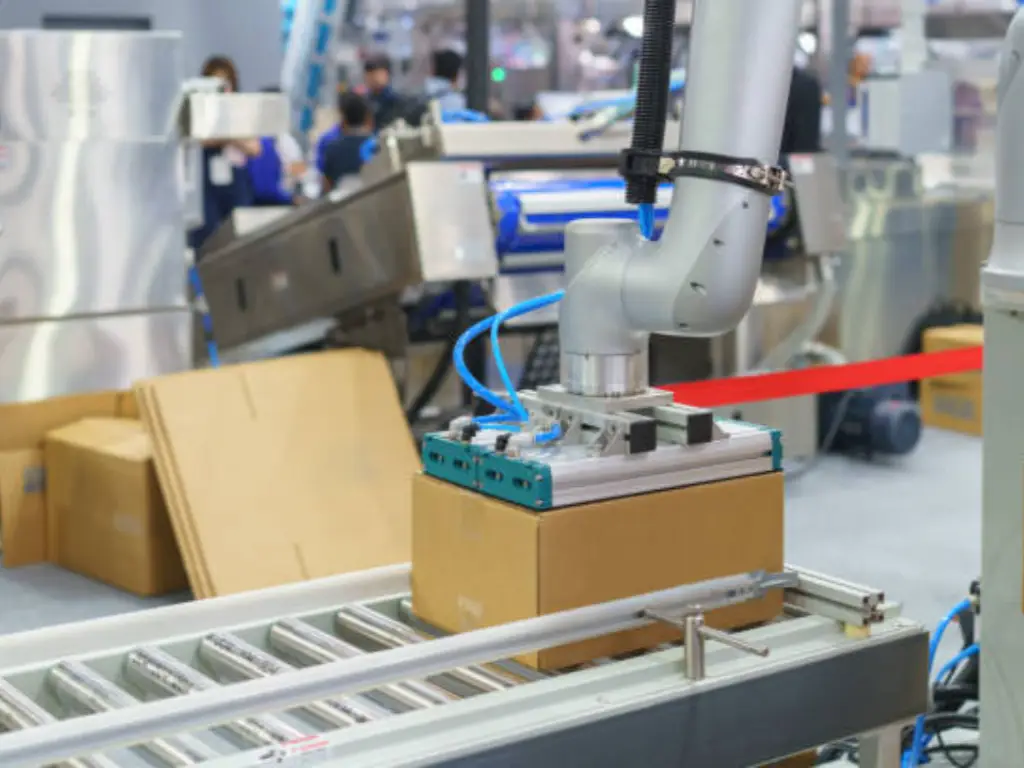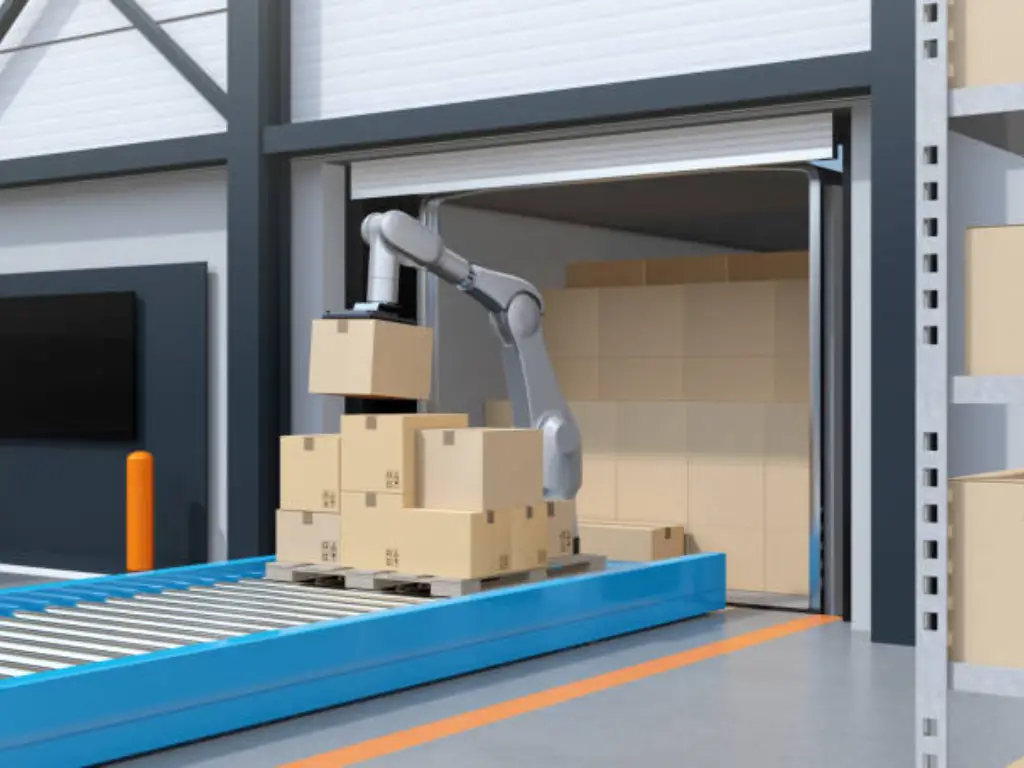In the competitive world of contemporary manufacturing, a product’s journey does not stop when it leaves the assembly line. It is only complete when that product is in the hands of the end user, intact and as intended, ensuring customer satisfaction. In between these two points is a very important packaging process that is usually underestimated: secondary packaging. This is where the efficiency of operations is put to the test for any business owner. A bottleneck on this final run—a sluggish case erector, a faulty packing machine, or a high percentage of shippinglosses is more than a nuisance. It is a big burden on your resources and a direct threat to your profit margins.
This guide is meant to provide a fresh perspective. We will explore the world of secondary packaging not as a cost center to be reduced, but as a strategic process to be maximized. We will discuss how the strong, effective, and dependable power of pneumatic technology can turn this vital operation from a source of production issues into a source of competitive advantage. This is your guide to the last, most important steps that will secure your product, your brand, and your bottom line.
What is Secondary Packaging? Unpacking the Three Tiers of Protection
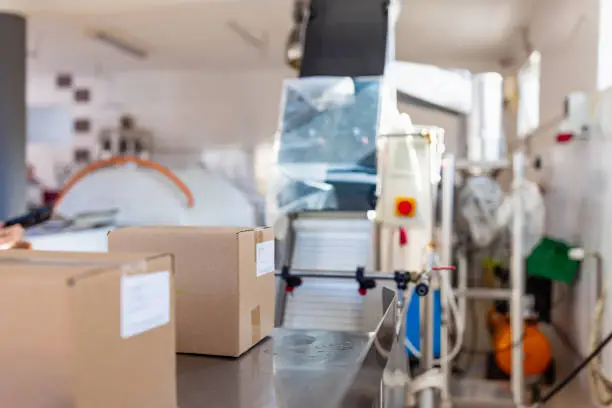
One has to learn the language of a process and its position in the greater logistics ecosystem before he or she can master it. The world of packaging solutions has three main packaging levels, with these types of packaging each having a particular purpose. The essential role of secondary packaging, the crucial intermediary layer, is to act as a shield to its contents and a supply chain logistical tool. It is the initial layer of protection for a group of products, the point where individual items are grouped into one manageable unit.
Think of it as the unit that a stock clerk deals with, not the one that the final consumer purchases. It is the corrugated box with a dozen bottles of sauce, the shrink wrap tray of twenty-four yogurt cups, or the printed carton with ten smartphone boxes. In this capacity, it is not just a mere container, but a crucial carrier of information, carrying barcodes, lot numbers, and handling instructions that ensure the supply chain management process runs smoothly. It is also a secondary canvas for your brand, which strengthens your identity even before the primary packages are viewed.
Primary vs. Secondary vs. Tertiary Packaging: A Clear Comparison
In order to understand the role of secondary packaging fully, it is important to put it in perspective. The three levels of packaging are interdependent, with each level meant to safeguard and unitize the other. A lack of understanding of their functions may result in inefficiencies, wastage, and potential damage to products.
Their specific roles are as follows:
| Tier | Purpose | Primary Audience | Common Examples |
| Primary Packaging | The first layer of packaging that is in direct contact with the product itself. It is designed for the end user. Its purpose is to contain, protect, and identify the product for the consumer. | The Consumer | Examples of primary packaging include the aluminum can for a soda, wine bottles and water bottles, the blister pack for pharmaceuticals, or the plastic wrapper on a candy bar. |
| Secondary Packaging | The layer used to group and protect goods already in primary packaging. It is designed for handling and display at the point of sale. Its purpose is to facilitate stock-keeping and retail presentation while providing an additional protection layer. | Retailers, Wholesalers, Logistics Personnel | Secondary packaging examples include the printed 12-pack carton for soda cans, the corrugated box holding 24 bags of chips, or the shelf-ready display case for cosmetics. |
| Tertiary Packaging | The outermost layer used for bulk handling and the shipping process. It is designed purely for logistics. Its purpose is to unitize mass quantities of secondary packages for safe, efficient transport from the factory to the distribution center. | Shippers, Warehouse Operators | The stretch film wrapped around a pallet of boxes, large shipping crates, and strapping. |
Why Your Bottom Line Depends on Effective Secondary Packaging
A common error is to consider secondary packaging as an operational necessity—a cost to be incurred. The strategic manufacturer, however, appreciates it as a strong force that determines profitability. A good secondary packaging plan will have an overall effect on the whole business, from the factory floor to the retail shelf, providing real payoff in efficiency, protection, and market performance. The importance of packaging is an excellent opportunity that should not be overlooked.
Supply Chain Efficiency
As soon as your individual products are packed into a secondary package, their logistical character is changed. They are no longer thousands of individual objects but hundreds of standardized, traceable units. This is a revolution that is central to supply chain effectiveness. An effective case makes all the subsequent logistical processes easier. Inventory counts are quicker and more precise. The process of handling, be it by a warehouse worker or a robotic arm, is simplified. Above all, standardized case sizes enable the careful optimization of space—on a pallet, in a warehouse rack, and most importantly, within a shipping truck. This density optimization is directly translated into reduced freight costs, a variable that can greatly affect your ultimate cost of goods sold.
Product Protection
The primary packaging is designed for the shelf; the secondary package is designed for the journey. It is the necessary safeguard for your product during the hardships of transit, playing a key role in product protection. It absorbs the shock of bumpy roads, withstands compression when stacked on a pallet, and is puncture-resistant to hazards that may happen in a busy distribution center. Any damaged product is a complex loss: the price of the goods, the price of the return shipping, the cost of handling the return, and the unquantifiable yet substantial price of a lost customer. Strong secondary packaging is the only way to counter these losses, ensuring your investment in quality manufacturing is not spoiled by transit failures and that product integrity is maintained.
Brand Enhancement & Retail Performance
The struggle to capture consumer attention in the busy contemporary marketplace can start even before your product is in sight. Shelf-Ready Packaging (SRP) or Retail-Ready Packaging (RRP)is a good example of how a type of secondary packaging has become a useful marketing resource. These are designed to be opened and put on retail shelves as fast as possible, offering retailers easy access and reducing stocking time a major advantage in itself. Better still, they are a branded touch point, using quality graphics and smart structural design to make a good impression, capture the attention of the shopper, and convey your brand’s value proposition. It makes your products look consistent and professional, enhancing their product visibility and selling opportunities, leading to a better consumer experience.
The Anatomy of a Pneumatic-Powered Secondary Packaging Line
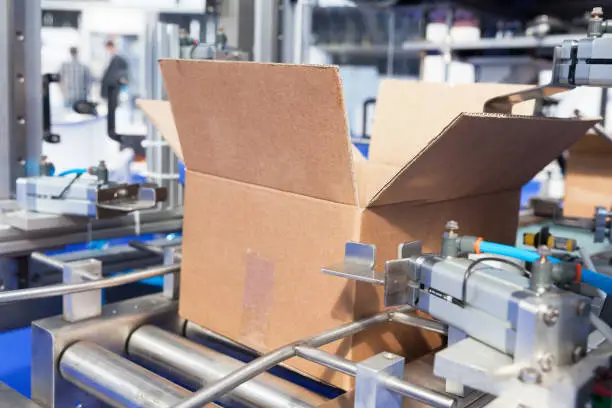
In order to fully realize the efficiency of pneumatic automation, it is necessary to imagine the process. A contemporary secondary packaging line is a series of controlled movements, a location where speed and accuracy have to exist in harmony. It is a system of actuators and controls that direct the controlled force of compressed air at its core to execute complex tasks with amazing simplicity and reliability. We will take a tour of the four major steps in this process and see how pneumatic components perform each step perfectly in time.
Stage 1: Flawless Case Erecting with Pneumatic Precision
The whole procedure starts with a flat, stacked corrugated piece. The initial difficulty is to convert this two-dimensional object into a three-dimensional, perfectly square container. This is the starting point; any mistake made here will be passed on to the whole line. This is triggered by a pneumatic system in an almost instantaneous action. A series of vacuum suction cups, driven by a pneumatic vacuum generator, drop onto the upper section of the cardboard in the magazine. It uses a specific amount of negative pressure to hold the surface, raise it, and open it into its box shape. At the same time, several pneumatic cylinders are activated at ideal timing. A group of short-stroke cylinders fold the minor bottom flaps inwards, and a longer-stroke cylinder sweeps the major flaps into position, where they are held firmly by the sealing mechanism. The whole process takes less than a fraction of a second, and leaves a perfectly formed case, waiting to receive its contents.
Stage 2: Orderly Product Grouping Using Pneumatic Cylinders
As the erected cases pass down the line, the products themselves are being marshaled into formation. They come out of the primary packaging process, usually in a single-file line on a conveyor. The job here is to pack them into the exact grid pattern needed—say a 4×3 grid to pack a case of twelve. This is a typical use of pneumatic cylinders. When the products pass a sensor, a small pneumatic cylinder, commonly referred to as a stopper, extends to stop the lead product. Others are permitted to pile up behind it. When the right number of products in a row is counted, a second cylinder, a pusher, moves the whole row to the side on a staging plate. This is repeated and each completed row makes the next line of the grid. The movements are quick, positive and precise so that the group of products is always perfectly shaped for the next stage.
Stage 3: Gentle Yet Firm Case Packing with Grippers and Vacuums
This is usually the most sensitive aspect of the operation, especially forfragile items. The whole set of products, now in the ideal position, should be picked up and put into the waiting case without any harm. The difficulty lies in being quick and tender. Pneumatics has two viable packaging solutions in this case. For heavy objects such as cans or bottles, a large pneumatic gripper with specially designed fingers can be lowered, where it will firmly wrap around the whole group and then raise and lower it into the case. A vacuum-based solution is best for more delicate objects or those with sensitive surfaces. A huge plate with a set of suction cups, each associated with a product, is lowered over the group. The vacuum is activated, and everything is picked up at once and safely. The whole assembly is then transferred over the case and dropped into it, with the vacuum escaping at the exact time to place the products softly at the bottom. The compliance of air is inherent and enables a soft touch, which avoids the shocks and impacts that may destroy sensitive goods.
Stage 4: Secure Case Sealing Driven by Pneumatic Actuators
The last thing to do is to fasten the case and send it on its way. The top flaps should be sealed in the right order and then taped or hot-melted. This is the first thing to ensure product protection during transit. Again, pneumatic actuators are efficient in this task. A sensor identifies the position of the box as it enters the sealing station. The top minor flaps are folded inwards by a set of simple pneumatic actuators, usually directed by rotary mechanisms. A bigger mechanical arm, driven by a second pneumatic cylinder, then sweeps the major flaps down to seal the box. This last step ensures that the flaps are firmly secured as the case is pressed through the taping head or glue applicator. It is simple, strong and highly reliable and offers a safe seal that will ensure the contents, like hazardous materials, are safe until they are delivered to their destination.
The Pneumatic Advantage: Why Air Power is the Workhorse of Packaging
The above tour of the packaging line shows how, but it is also necessary to know why. Why has pneumatic technology been the workhorse in this harsh environment over the decades? The solution is in the fact that it is a combination of features that is unique and makes it ideally suited to the realities of a high-volume manufacturing floor.
| Feature | Description |
| Speed | Pneumatic systems are inherently fast. When a valve is opened, compressed air expands quickly, and the actuator moves almost instantly. This enables the high cycle rates required to meet modern production demands. |
| Reliability | Simplicity enhances reliability. Pneumatic components have fewer internal parts than electro-mechanical systems. They are well-built to resist vibration, dust, and temperature changes in industrial environments, resulting in longer service life, reduced downtime, and consistent quality. |
| Cost-Effectiveness | Pneumatic systems have a lower total cost of ownership. The initial cost of cylinders, valves, and actuators is significantly lower than that of servo-driven systems. They are also durable and easy to maintain, reducing operational costs throughout the machine’s lifespan. |
| Cleanliness | In the food, beverage, and pharmaceutical industries, hygiene is essential. Pneumatic systems operate on clean, filtered air and do not require oils or greases that could contaminate products or packaging environments, ensuring compliance with regulations and maintaining legible product information such as expiration dates. |
| Built-in Overload Relief | When a machine becomes jammed, a pneumatic cylinder simply stalls. The compressed air acts as a cushion, preventing the damage that would occur if an electric motor forced through an obstruction. This fundamental feature saves millions in maintenance and lost production. |
Choosing Your Partner: What to Look For in an Automation Parts Supplier

In the world of industrial automation, every component matters. The reliability and precision of each part determine how smoothly and efficiently your operations run. At Hebai-Omch, we understand that selecting a supplier is not merely about procurement — it’s about building a partnership that sustains performance, innovation, and growth. With over 37 years of experience in the industry, we are committed to delivering products and solutions that enhance your operational reliability,streamline production, and reduce downtime, ensuring your business continues to move forward without interruption.
Every second of downtime costs productivity and profit, which is why we design our pneumatic components to endure 3 to 10 million operating cycles for reliable 24/7 performance under demanding industrial conditions. Certified toISO 9001, CE, CCC, and ROHS standards, our products meet rigorous global benchmarks for safety and quality. Whether you need high-speed sorting, stable vacuum gripping, or precise control under complex conditions, our components deliver the durability and precision your operations demand. Built to ISO 6431, ISO 13849, and ISO 61508 standards, our cylinders and valves ensure accurate motion control and consistent air pressure regulation — providing the foundation for operational excellence and sustainable growth.
At Hebai-Omch, we go beyond supplying components — we provide expert technical support and partnership. Our experienced engineering team offers full-cycle service, from product selection and design validation to installation and optimization, helping clients implement efficient, high-performance automation systems. We believe true collaboration means growing together with our customers, driving greater productivity, safety, and innovation across every production line. Choosing Hebai-Omch means choosing a partner dedicated to your uptime, your profitability, and your success. We don’t just deliver parts — we deliver confidence, consistency, and the power to keep your automation moving forward.
Common Types of Secondary Packaging Your Automated Line Will Handle
A properly designed pneumatic automation system is very flexible and can be used for many different types of packaging. Knowledge of these main types assists in creating a line that is efficient now and capable of meeting future requirements.
- Regular Slotted Containers (RSC): This is the most widespread type of packaging. The length of all the flaps is the same and the two outer flaps are joined at the center. The pneumatic operation outlined above is ideally suited to the construction, filling, and closing of these industry-standard cases.
- Shrink Bundles: This technique is commonly applied to beverages and canned goods, and it is performed by wrapping a bundle of products in a thin polymer film (shrink wrap), which is then heated to shrink tightly around the products. The products must be grouped before entering the shrink tunnel, and this is done by pneumatic pushers and collators.
- Display Cases: These are meant to serve as a shipping container and a point-of-sale display. They are frequently perforated and can be removed easily. The soft power of pneumatic grippers is perfect in assembling and packing these more fragile items without inflicting cosmetic harm.
- Trays: Flat, corrugated, low-walled bases, commonly combined with shrink film and made from various secondary packaging materials. Pneumatic systems are good at shaping these trays and loading products onto them in a fast and accurate manner.
Future-Proofing Your Line: Key Trends in Secondary Packaging Automation
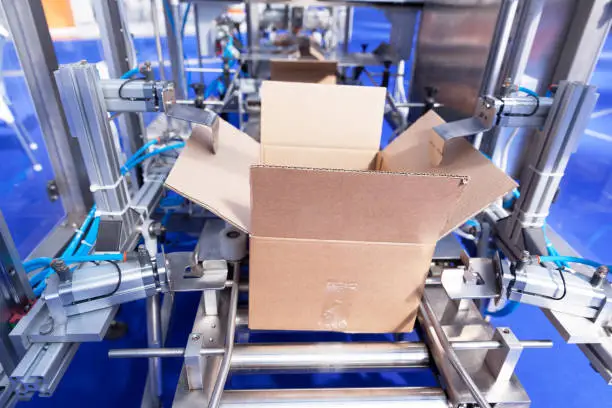
The manufacturing world is never stagnant. In order to have a competitive advantage, there is a need to develop systems that are not only efficient in the present but also prepared to face the challenges of the future. The purpose of secondary packaging is evolving, influenced by three major trends, and pneumatics is adapting to them directly.
- Sustainability: The need for more sustainable packaging is strong and increasing, and it can imply the use of thinner, lighter, or recycled primary packaging materials. This has a positiveenvironmental impact. These materials may be harder to manage. Modern pneumatic systems that have sophisticated pressure and flow control can be adjusted to handle these sensitive materials without tearing or crushing them, allowing manufacturers to achieve their environmental objectives without compromising automation.
- Flexibility: The emergence of e-commerce and product customization is creating a demand for smaller batch sizes and more frequent line changeovers. Flexible automation is the future. The modular nature of pneumatic systems, combined with the introduction of quick-change tooling and adjustable actuators, is well adapted to this high-mix, low-volume environment, and can be easily adapted to new package sizes and formats.
- Data & Intelligence (IIoT): Welcome to the smart factory. The following generation of pneumatic components is being fitted with inbuilt sensors. These sensors are used to monitor pressure, position, and cycle counts in real-time. This information can be inputted into a central control system to anticipate when a part may require maintenance before it breaks down, transforming reactive maintenance into proactive optimization and further enhancing overall equipment performance (OEE).
In conclusion, the mastery of secondary packaging is no longer an option for the ambitious manufacturer; it is an imperative. It is a domain where thoughtful engineering and strategic investment yield profound returns in efficiency, reliability, and market presence. As we have seen, pneumatic automation plays a crucial role and is the proven, powerful, and intelligent key to unlocking this potential. The precision of its movements, the simplicity of its design, and its unwavering reliability make it the ideal engine for this critical stage of production. Investing in high-quality, high-performance automation components is, therefore, a direct investment in the future prosperity and resilience of your enterprise.
Ready to take your secondary packaging efficiency to the next level? Contact our automation experts today for a complimentary production line evaluation and discover more automation applications through comprehensive Pneumatic Solutions and detailed case studies.

